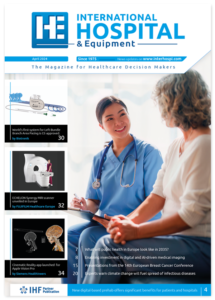NASA Once Again Relies on Mortara for Advanced Holter Monitoring
Since 2008, NASA has chosen Mortara as its Medical Devices Partner for use in ECG Monitoring at the International Space Station.
In November 2008, NASA selected Mortara Instrument’s H12+TM high-resolution Holter recorders to travel onboard the Space Shuttle Endeavor STS-126 mission. The H12+ recorders were used to capture ECG data from the astronauts while working aboard the International Space Station (ISS). Data from the recorders were transmitted from the International Space Station to NASA’s Johnson Space Center in Houston, Texas via satellite where it was analyzed by Mortara’s HScribeTM Holter analysis system.
Mortara had worked closely with NASA Ames Research Center’s engineers (Space Biosciences Division) to ready the H12+ recorders for the additional stress of space travel. Prior to launch, the H12+ recorders were also used for pre-flight scientific studies; reports generated by the HScribe system allowed for the in-space ECG findings to be compared to any pre-flight ECG study results.
The collaboration with NASA did not end with the Space Shuttle Endeavor STS-126 mission; on March 1, 2016, after a record year-long mission spent in space, Expedition 46 Commander Scott Kelly of NASA and Flight Engineers Mikhail Kornienko and Sergey Volkov landed in Kazakhstan. Kelly and Kornienko completed an International Space Station mission as members of expeditions 43, 44, 45 and 46 to collect valuable data on the effect of long duration weightlessness on the human body that will be used to formulate a human mission to Mars. Once again, the Mortara H12+ played a key role in that data collection.
For more info click here

